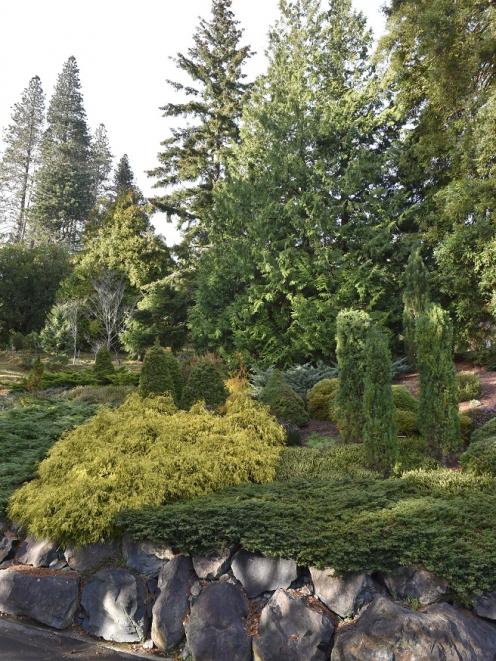
When pruning is required, the general rule is not to trim back past the green growth to bare wood as they will not recover. However, there are exceptions. Most species of juniper, yew and redwood will re-sprout from bare branches. You can check before pruning by looking for any signs of growth sprouting further back along the older wood.
Some conifers will form great hedges, coping well with being trimmed back regularly with hedging shears. However, to emphasise the natural form and beauty that many conifers have, it is much better, when necessary, to surreptitiously prune with secateurs.
Branches of columnar conifers can splay out — this effect can be prevented with regular pruning to reduce weight from the branches, but if it does occur you can trim the branch back lightly then discretely tie the splaying branch back to the main trunk.
Dead or damaged patches are often hard to remedy, but it may be possible by first pruning out the dead or damaged wood then training neighbouring branches to fill the gap by tying and retying them into position as they grow.
Another beneficial task is the regular removal of old plant debris, which can accumulate inside the plant. This will create a healthier plant by letting air and light penetrate as well as improving their overall appearance.
Garden Life is produced by the Dunedin Botanic Garden. For further information contact Robyn Abernethy.












